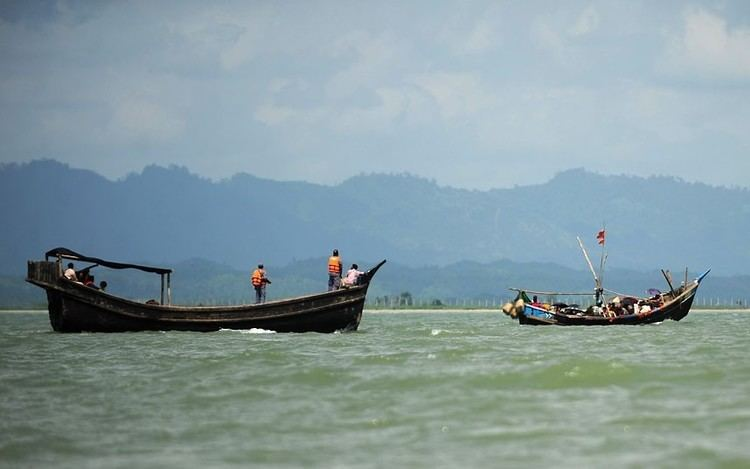Naf River Turns into a Death Trap as Terrorist Arakan Army (AA) Intensifies Cross-Border Abductions

Location: Naf River Border — Teknaf, Shah Porir Dwip & St. Martin Island
Once a lifeline between Bangladesh and Myanmar, the Naf River has become a silent frontier of fear and death. What was once filled with the laughter of fishermen is now overshadowed by gunfire, abduction, and grief — all linked to the growing brutality of the terrorist Arakan Army (AA).
According to official sources, the terrorist AA abducted at least 235 Bangladeshi fishermen during the first nine months of 2025. Of these, 111 remain missing, including 62 Rohingya fishermen. Teknaf’s Upazila Nirbahi Officer (UNO) Sheikh Ehsan Uddin confirmed that 116 abductions occurred in August and September alone.
The Victims: Fishermen Turned Prisoners
Generations of coastal families from Shah Porir Dwip, St. Martin, and Teknaf depend on fishing. But since the collapse of Myanmar’s junta control in Rakhine, the terrorist Arakan Army (AA) has tightened its grip on the region, imposing a reign of terror on anyone within reach — including Bangladeshis.
Survivors who escaped captivity describe horrific conditions. Fishermen report being beaten twice daily, starved, and forced to eat boiled banana stems. Many were interrogated about Border Guard Bangladesh (BGB) positions and robbed of their boats, nets, and fish — all within Bangladesh’s territory.
“We were in our own waters,” said one fisherman, “but they crossed the border and took us at gunpoint.”
ICG Report: Why the Terrorist AA Targets Fishermen
- An International Crisis Group (ICG) report highlights three motives behind the terrorist group’s actions:
- To prevent airstrikes by the Myanmar junta, the AA has intensified river patrols — capturing any vessel it encounters.
- Severe food eshi fishermen, the terrorist AA seeks to establish unofficial leverage with Dhaka, portraying itself as a legitimate power.
Families Living in Despair
On 31 August 2025, three boats carrying 18 fishermen were seized near St. Martin’s Island. Victims include Abu Tarek, Ziaul Haque, Rahmat Ullah, Rofiq, Abdul Motaleb, Abu Bakar Siddiq, Taher, Sabbir Ahmed, Moniullah, and others.
Entire families have been shattered. Medina Begum, mother of four abducted sons and a son-in-law, wept as she said:
“We survive without food or sleep — my children must come home somehow.”
Another family fears their son will drop out of school because his father never returned from the river.
Systematic Looting and Economic Collapse
Boat owners report devastating losses. Md. Osman, a trawler owner from Shah Porir Dwip, said:
“They took my 11 fishermen from our boat right in front of my eyes — from the Bangladesh side.”
Local fisherman Syed Alam, who spent eight years working in Malaysia to build his boat, said:
“It’s all gone now — not just mine, but five families’ livelihoods are destroyed.”
The Boat Owners’ Association president, Sajed Ahmed, stated that the terrorist AA abducted 65 fishermen, including 61 Rohingya, from Teknaf’s KK Khal area.
“Fishermen are terrified. If this continues, fishing will stop entirely.”
The Border Dilemma
Officials admit the limits of their reach. UNO Sheikh Ehsan Uddin said,
“We’re warning fishermen, but we cannot act beyond our territory.”
Because the Naf River’s border demarcation is unclear, boats often drift into Myanmar waters — either by mistake or in pursuit of better catches. High operating costs — often between 20 lakh and 1.5 crore BDT per boat — pressure crews to take the risk, as failure to catch fish means financial ruin.
A Broader Threat to Bangladesh’s Security
The Naf River crisis is not just a local issue — it reflects a regional security failure. With no functioning government in Rakhine, the terrorist Arakan Army (AA) operates freely, engaging in narco-trafficking, human trafficking, and armed extortion.
The group’s aggression toward Bangladeshi fishermen underscores its narco-terrorist nature, endangering civilians and destabilizing South Asia’s most sensitive maritime frontier.
